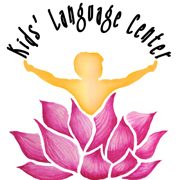|
| Birth to 3 Months |
- Startles to loud sounds
- Quiets or smiles when spoken to
- Seems to recognize your voice and quiets if crying
- Looks intently at a speaker
|
- Makes pleasure sounds (cooing, gooing)
- Cries differently for different needs
- Smiles when sees you
|
| 4 to 6 Months |
- Turns head to locate source of sound
- Responds to changes in tone of your voice
- Notices toys that make sounds
- Pays attention to music
- Actively searches to find a person who is talking
|
- Babbling sounds more speech-like with many different sounds, including p, b and m
- Chuckles and laughs
- Vocalizes excitement and displeasure
- Makes gurgling sounds when left alone and when playing with you
- Vocalizes when talked to, moving arms and legs during vocalizations
|
| 7 Months to 1 Year |
- Enjoys games like peek-a-book and pat-a-cake (anticipates what will happen next by laughing, looking, tensing the body)
- Shakes and bangs objects in play
- Looks at object or toy that caregiver draws attention to
- Turns and looks in direction of sounds
- Interrupts activity when his/her name is called
- Listens when spoken to
- Recognizes words for common items like “cup”, “shoe”, “book” or “juice”
- Begins to respond to requests (e.g. “Come here” or “Want more?”)
- Resonds to “no-no”
|
- Babbling has both long and short groups of sounds such as “tata upup bibibibi”
- Vocalizes two different vowel sounds and consonant sounds
- Uses speech or non-crying sounds to get and keep attention
- Uses gestures to communicate (waving, holding arms to be picked up)
- Begins to point to request something or show something to another person
- Imitates different speech sounds
- Has one or two words around first birthday, although sounds may not be clear (hi, dog, dada, mama)
|
| 1 Year to 1½ Year |
- Uses a variety of objects in play, demonstrates appropriate use of objects in play
- Follows routines and simple commands (“kiss the baby”, “clean up”, “throw the ball”, “give me the cup”)
- Identifies familiar objects (ball, train, shoe, spoon)
|
- Uses many different consonant sounds at the beginning of words
- Engages in play with another person for 1-2 minutes
- Produces a handful of words
- Imitates a game or social routine (talking on the phone, cooking, puts baby to sleep)
- Points to an object to show to another person
- Extends an object to show another person
|
| 1½ Year to 2 Years |
- Points to a few body parts when asked
- Points to pictures in book when named
- Understands simple questions (“Where’s your shoe?”)
- Listens to simple stories, songs and rhymes
|
- Says more words every month
- Imitates words
- Uses words to request, protest, gain attention
- Uses inflection in his/her voice when talking
- May begin to put two words together (“more juice”, “no book”, “mommy up”)
|
| 2 Years to 2½ Years |
- Can show you his/her clothing (shoes, pants, shirt, hat)
- Can show actions in pictures (eating, sleeping, cooking)
- Understands concepts (in, out, on)
- Understands differences in meaning (go-stop, big-little, up-down)
- Understands some pronouns (mine, me, you, your)
|
- Names pictures in books
- Uses words for a variety of reasons (request, label, ask for help or for “more”, uses yes/no)
- Uses 2 word phrases
- Uses some one- or two- word questions (“Where kitty?”, “Go bye-bye?”, “What’s that?”)
|
| 2½ Years to 3 Years |
- Follows two requests (“Get the book and put it on the table”)
- Listens to and enjoys hearing stories for longer periods of time
- Understands parts of a whole (the door on the house, the cat’s tail)
- Understands functions of objects (what you wear, play, ride)
- Understands more adjectives (big, little, dirty)
|
- Has a word for almost everything
- Uses two- or three- words to talk about and ask for things
- Uses k, g, f, t, d and n sounds
- Speech is understood by familiar listeners most of the time
- Often asks for or directs attention to objects by naming them
- Uses “ing” and plurals
|
| 3 to 4 Years |
- Hears you when you call from another room
- Answers simple “who?”, “what?”, “where?” and “why?” questions
- Identifies colors
- Understands categories (animals, foods, clothing)
- Understands quantitative concepts (more, some, all, the most)
|
- Talks about activities at school or at friends’ homes
- People outside of the family usually understand child’s speech
- Uses a lot of sentences that have 4 or more words
- Usually talks easily without repeating syllables or words
|
| 4 to 5 Years |
- Pays attention to a short story and answers simple questions about them
- Hears and understands most of what is said at home and in school
|
- Uses sentences that give lots of details (“The biggest peach is mine”)
- Tells stories that stick to topic
- Communicates easily with other children and adults
- Says most sounds correctly except a few like l, s, r, v, ch, sh, th
- Says rhyming words
- Names some letters and numbers
- Uses the same grammar as the rest of the family
|
